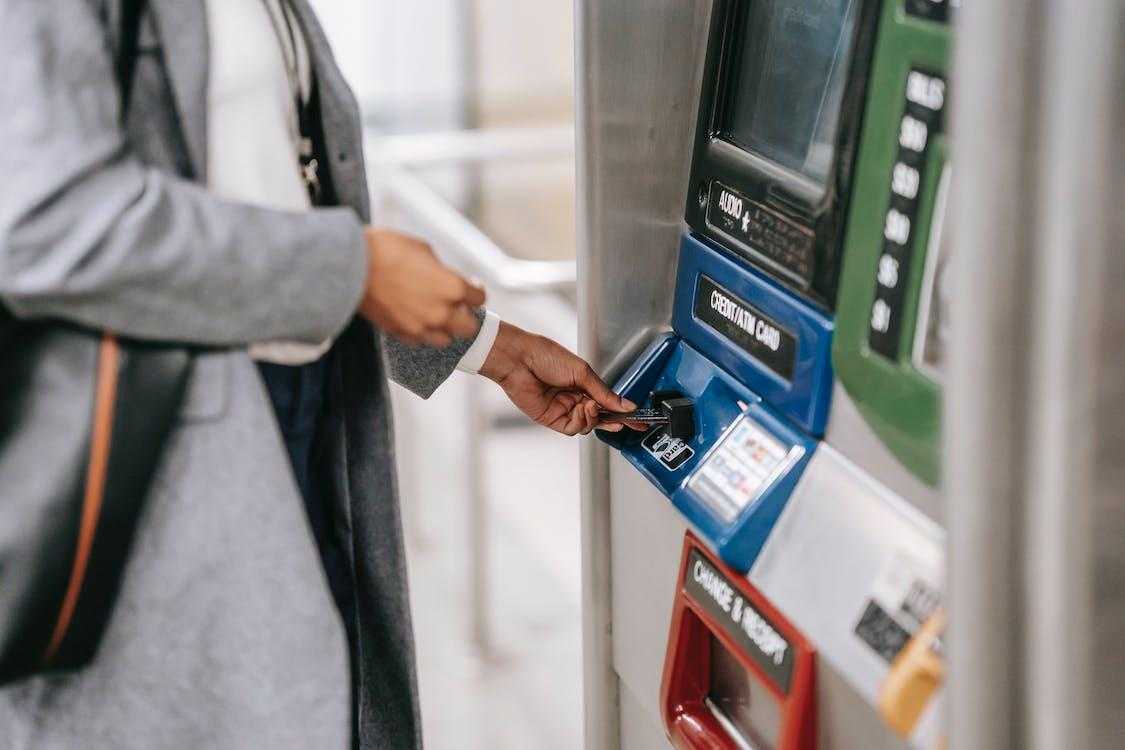Secured and Unsecured Loans – How Do They Compare?
 Fact-checked
Fact-checked
Last Updated: January 17, 2022
Loans can be confusing; if you’re considering getting one, you have to understand the full scope of what a loan entails. In this article, you’ll read what is a secured loan vs. an unsecured one, what are the main differences between the two, and their advantages and disadvantages. In the end, you’ll be able to decide which is best for you.
What Is a Loan?
Taking out a loan means borrowing a certain amount of money that you must pay back within a certain amount of time, with an added interest rate to the capital sum. The loan amount and interest rates are determined by your credit score and the length of time you’ll be paying back the loan.
There are many reasons why people take out loans, and there are different types of loans available. Before you get a loan, you need to consider any main difference between secured and unsecured loan organisations.
As mentioned, the type of loan depends on why you’re going to use it, such as home improvements, buying a car, large purchases, or debt consolidation. Before applying, you need to make sure that you’re applying for the right loan, that you qualify for it, and have all the necessary documentation ready. Once you’ve filled out an application, remember to double-check and ensure that everything’s in order before waiting to be approved.
| DID YOU KNOW? Historically speaking, interest rates are low right now, but the lowest rates ever were issued in 2012. They ranged from 3% to 3.5% depending on the type of loan, as secured and unsecured loans have different interest rates. |
Loan Types
Choosing the right type of loan can make the lending process easier, lower the risk involved, and even help you save money! Although there are various types of loans, we’re going to focus on and discuss revolving and term loans; and later on, we’re going to explain what is secured loan and how it works as opposed to an unsecured one.
Revolving Loan
A revolving loan is a loan with a flexible borrowing limit, which allows the borrower to withdraw money regularly and repay to utilise the loan again. The lender gives out a maximum credit limit and charges a variable interest rate. These loans are only approved for short-term periods, usually up to one year. The borrower can withdraw all money at once up to the maximum limit, and they don’t need to get approval if they want to reuse the loan.
Still trying to understand what is a loan on a revolving basis? There are no fixed repayments with revolving loans – there’s only a minimum amount you need to repay every month, which is determined by the percentage of the withdrawn amount. The full amount needs to be repaid when the determined time frame expires. Examples of revolving loans include credit cards, personal loans, and bank overdrafts.
Term Loan
A term loan has a fixed loan amount and repayment terms on a strict schedule. Interest rates can be fixed or variable, and they must be repaid monthly or quarterly. Once all the available funds are withdrawn, the borrower cannot reuse the loan. These loans are issued for longer periods, from one to 25 years.
So how does a secured loan work? It has the same principle as a term loan; the full amount is backed by collateral on physical assets like student loans, auto loans, and home equity loans. The payments towards term loans need to be made regularly because non-payment or late payments can incur penalties and higher interest charges.
| DID YOU KNOW? The earliest example of a loan was in 2,000 BCE in Mesopotamia! These loans were taken out by farmers, making them essentially business loans. Although loans likely existed earlier in history, the first recorded example dates from 4,000 years ago. |
What Is a Secured Loan?
A secured loan is an amount of money borrowed with collateral or secured with an asset that’s in your possession like personal property. The most common type of secured loan is a mortgage, for which your home serves as collateral; other assets can be taken as collateral, such as a car, jewellery, savings account, or stocks and bonds. The secured loan definition says that this type of loan has lower rates and allows people to borrow larger amounts of money (usually more than £10,000).
The amount of money you can borrow with a secured loan is determined based on the value of the physical assets, your income, your credit score, and your overall financial health.
If you’re unable to meet your repayment terms, the lender can repossess property, making these loans riskier for the borrower but less risky for the lender. They can always use collateral to get their money back!
With secured loans explained, you’ll see that these can be used for various purposes, like paying back credit card debt or other loans – by doing this, you can reduce monthly expenses by not paying an interest rate on numerous loans. As a result, you can save a substantial amount of money, making it a great way to increase your passive income. Secured loans can also be used for home extensions or major home improvements – if you list the exact purpose of the loan, it’s more likely that you’ll be approved.
| DID YOU KNOW? The word ‘mortgage’ derives from the French expression ‘mort Gaige’, meaning ‘dead pledge’. It was believed that when the mortgage was paid off, the debt died! |
What Is an Unsecured Loan?
Unsecured loans are borrowed funds that aren’t tied to any assets, meaning that the lender can’t repossess your property if you fail to make a payment. However, if you forget to pay, the amount you’ve borrowed you may incur additional charges which negatively impact your credit score and ability to borrow money in the future.
What is unsecured debt? Keep in mind that any debt you owe when you take out an unsecured loan is known as unsecured debt since there’s no form of security to back it up.
When it comes to unsecured loans, interest rates vary significantly from lender to lender – they decide on the amount you can borrow based on several economic factors, such as your income, credit history, and the purpose of the loan.
Still trying to figure out what is unsecured loan? The best way to explain it is through an example. The most common type of unsecured loan is a personal loan, which is usually used for renovating a home, buying a car, or debt consolidation. Other examples of unsecured loans are credit cards and overdrafts. Unsecured loans are straightforward – you borrow a certain amount of money from a bank or lender and agree to make regular repayments until the loan amount is repaid in full, as well as any interest owed as stated in the unsecured loan definition.
| DID YOU KNOW? Making higher monthly payments towards your mortgage can reduce the length of your loan, but not only that: it could also save you thousands of pounds which you would’ve paid in interest! |
Key Takeaways
| A loan is an amount of money borrowed from a bank or a lender. |
| There are different loan types – secured and unsecured; revolving and term loans. |
| A secured loan is money borrowed against collateral – a house, car, or financial assets. |
| An unsecured loan, on the other hand, is money borrowed without ties to physical assets. |
| Your type of loan should be determined based on how it’s going to be used. |
Advantages and Disadvantages of Secured and Unsecured Loans
These two loan types have advantages and disadvantages. Before choosing between one or the other, you need to know what is an unsecured loan as opposed to a secured loan, and be aware of its pros and cons!
Secured Loans
| Advantages | Disadvantages |
| Larger amounts of money can be borrowed | You can lose secured assets |
| Lower interest rates | Longer repayment periods |
| Easier to qualify |
Unsecured Loans
| Advantages | Disadvantages |
| No risk to your assets | The loan amount is lower |
| Quick and easy to arrange | Interest rates are higher |
| Easy to budget |
Secured vs Unsecured Loan: Which One Is for You?
The type of loan you take out depends on why you need it. When applying for a loan, you need to list the purpose for which the money’s going to be used. Unsecured and secured loans have advantages and disadvantages which need to be carefully considered if you’re given a choice between the two.
Such a situation may arise when you need to pay for home renovations – you may get a home equity loan, which is a secured loan, or an unsecured home improvement loan. In such cases, you need to consider the implications that come with each type of loan and choose one that meets your needs and repayment ability.
The secured loan meaning and importance are evident when discussing more substantial amounts of money because you usually can’t get a large loan without some form of collateral. This makes the risk more significant; if you’re unsure that you can meet deadlines and make timely payments every month, you shouldn’t consider a secured loan. Additionally, if you don’t have a regular income or good credit history, it’s unlikely that you’ll be approved.
On the other hand, unsecured loans meaning is predominant for people with poorer credit scores and no valuable assets to offer for borrowing funds. Also, these loans are a common choice among people that don’t want to risk their home or something else they own, although interest rates are higher and they need to be paid in a shorter period. If you’re thinking about what does unsecured loan mean in the long run, keep in mind that even though unsecured loans involve less risk, any late or missed payments will impact your credit score and make it difficult to borrow money in the future.
Important Things to Consider
Before applying for any type of loan, you need to ask yourself some important questions. What are you going to use the money for? You should also consider if you have any assets you can use as collateral, and if you do, are you willing to risk losing them?
Regardless of the type of loan you want, the secured loans definition clearly states that you must always provide some form of security – if you don’t have anything to offer you have to apply for an unsecured loan. If you have assets but poor credit, the best thing to do is apply for a secured loan. Remember to always take into consideration the terms of the loan, as well as the fees that come with it – make sure you can meet the payments on time!
| DID YOU KNOW? Loan payments can be automated – the majority of lenders offer you the option of taking the allotted sum directly from your bank account every month. This ensures that borrowers make payments on time and don’t miss a single payment, so their credit scores remain unaffected. |
Conclusion
The debate surrounding secured vs. unsecured loan is an ongoing one, and if you’re among those that need to choose between the two, remember that the most important thing you need to do is put your financial needs first. Although both loans have upsides and downsides, you need to choose the loan that will provide coverage for your expenses and even more importantly, the loan you can afford to repay.
FAQ
The best example of a secured loan is a mortgage – with a mortgage, the home serves as collateral and the monthly payments consist of the ratio of the principal sum plus interest.
The secured loan definition lists numerous things that can be used as collateral – a home, a car, a savings account, jewellery, or other valuable possessions.
The question of what is a secured loan often comes up – the main thing you need to know is that this is a loan backed by collateral. This is also the main difference between a secured and an unsecured loan – unsecured loans don’t have to be backed by an asset!







![How to Find Someone’s Tinder Profile? [2024 Expert Guide]](https://review42.com/wp-content/uploads/2023/06/Finding-Someone-on-Tinder.jpg)

